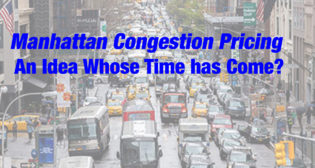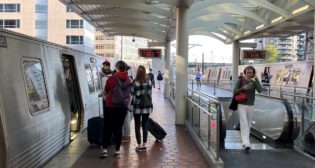
Bombardier opens Brazil monorail plant
Written by Douglas John BowenBombardier Transportation Friday inaugurated a new monorail vehicle manufacturing facility in Hortolândia-São Paulo, Brazil.
The new $15 million production site is Bombardier’s global production center for monorail production, positioned to serve Brazil in particular but also planned to serve monorail markets worldwide [such as in Las Vegas, Nev., pictured above], the company said.
The Hortolândia Monorail manufacturing site, built in 18 months, will start its manufacturing activities immediately, Bombardier said, with the first carbodies and bogies already being manufactured there and the first completed monorail cars expected to exit the assembly line later this year. The new site was designed and built based on technology transferred from Bombardier’s manufacturing and engineering hubs in Kingston, Ontario, St. Bruno, Quebec, and Pittsburgh, Pa.
Bombardier Transportation President and CEO André Navarri participated in the inauguration ceremony at the new site., which also included São Paulo State Governor Geraldo Alkmin, São Paulo State Transport Secretary Jurandir Fernandes, Quebec Prime Minister Jean Charest, Quebec Minister of Economic Development Sam Hamad, and representatives of São Paulo Metro and of other railway operators in Brazil, as well as Bombardier suppliers and employees.
“This new monorail manufacturing site represents the second phase of Bombardier’s industrial expansion initiated in 2009 that aims to triple our number of employees in Brazil to 600 people and to quadruple the industrial area in Hortolândia,” Navarri said. “Even more important than the new industrial facility is the advanced monorail vehicle we are going to manufacture here—a fine example of our continuous focus on technology development in order to offer interconnected modality of public transport across the globe.
Navarri added, “The new high capacity BOMBARDIER INNOVIA Monorail 300 system we are building for São Paulo is game changing because it offers a transportation capacity similar to a metro, yet the light infrastructure required reduces the construction price and the implementation schedule by up to one half, bringing quality of life benefits to citizens sooner and more cost effectively.”



